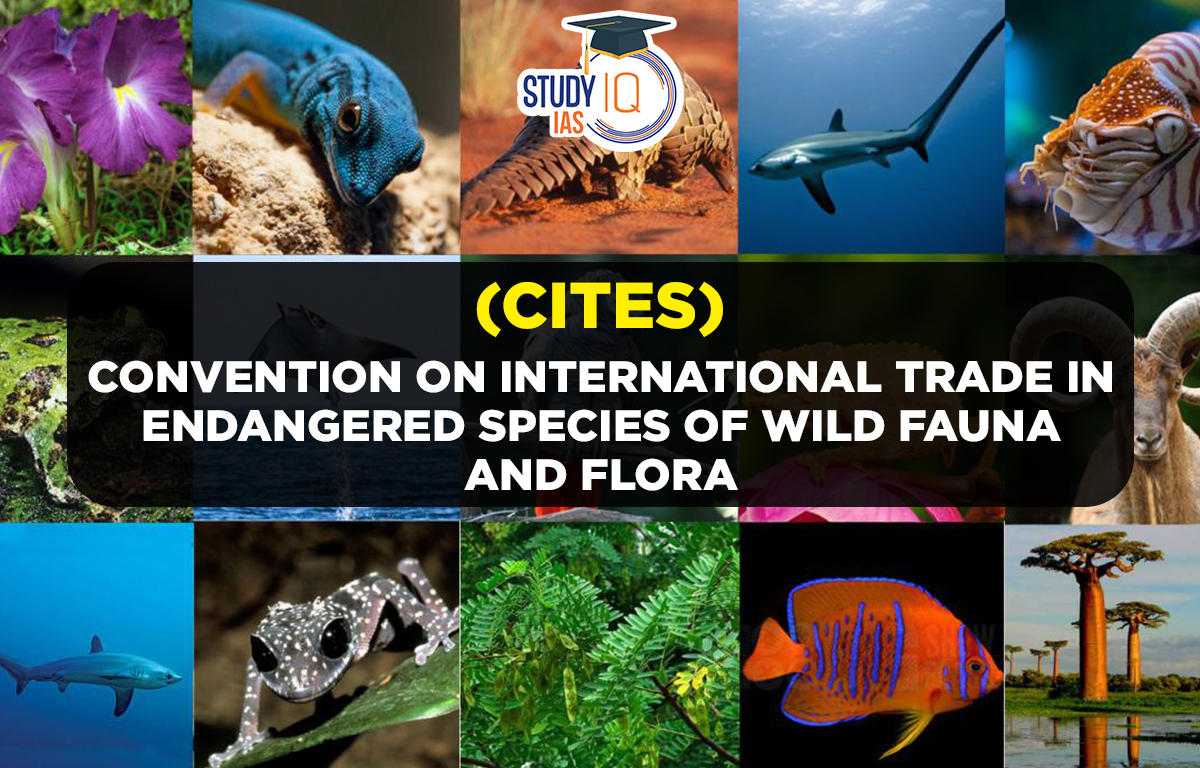Table of Contents
Context: March 3, 2023, World Wildlife Day marks the 50th anniversary of the Convention on International Trade in Endangered Species of Wild Fauna and Flora (CITES) in 1973.
World Wildlife Day
- In 2013, the United Nations General Assembly (UNGA) proclaimed March 3 as the UN World Wildlife Day to celebrate and raise awareness of protecting the world’s wild animals and plants.
- This was as the Convention on International Trade in Endangered Species of Wild Fauna and Flora (CITES) was signed in 1973 on this day.
- CITES is considered a landmark agreement on conservation that focuses on ensuring the sustainability of endangered species.
About CITES (Convention on International Trade in Endangered Species of Wild Fauna and Flora)
- It is an international agreement between governments to ensure that international trade in specimens of wild animals and plants does not threaten their survival.
- Establishment: CITES was drafted as a result of a resolution adopted in 1963 at a meeting of members of IUCN (World Conservation Union).
- Text of Convention was finally agreed in Washington in 1973 and entered into force in 1975.
- Headquarters: The CITES secretariat is administered by United Nations Environment Programme (UNEP) and is located at Geneva, Switzerland.
- Members: There are currently 184 parties (including India) to the Convention.
- All 184 Parties to CITES have right to attend, to put forward proposals to consider, and to vote on all decisions.
- Nature of the convention: Although CITES is legally binding on the Parties, it does not take the place of national laws. Rather it provides a framework to be respected by each Party, which has to adopt its own domestic legislation to ensure that CITES is implemented at the national level.
- How does CITES work? The species covered by CITES are listed in three Appendices, according to the degree of protection they need (Refer infographic).

India and CITES
- Extensive use of Appendix III: Since its ratification of CITES in 1976, India has listed 39 taxa in Appendix III.
- Through the listings, important international trade data was gathered that supported decision for application to a different CITES Appendix (with stricter trade controls).
- The Director of Wildlife Preservation, Government of India has been designated responsibility as the Management Authority for CITES (CITES-MA) in India.
- In addition, Government of India has also appointed five Scientific Authorities which assist the CITES MA on scientific aspects of CITES. These are:
- Zoological Survey of India (ZSI), Kolkata.
- Botanical Survey of India (BSI), Kolkata.
- Central Marine Fisheries Research Institute (CMFRI), Cochin.
- Wildlife Institute of India (WII), Dehradun.
- Institute of Forest Genetics and Tree Breeding (IFGTB), Coimbatore.
- International trade in all wildlife species of India, including the species covered under CITES in particular, is regulated collectively through the provisions of the
- Wild Life (Protection) Act of 1972,
- Export–Import Policy (EXIM Policy) under the Foreign Trade (Development and Regulation) Act of 1992 and
- Customs Act of 1962.
Limitations of CITES
- Structural gap limiting the effectiveness of CITES: The Convention is a trade agreement and only applies to flora and fauna that is traded internationally.
- CITES has no application to domestic markets and wildlife trafficking occurring intra-state. This is left to the respective governments.
- Issues with the listing: CITES’ application is restricted by its appendix listing system. Species not listed in an appendix are afforded no protection by the Convention.
- For example, only about 8 percent of world’s known reptile species are listed. This is despite reported trade in the skins of many non-listed reptiles.
- Political nature of negotiations: CITES is a consensus-orientated body but can take decisions by two-thirds majority when required.
- During the lifetime of CITES, 84 species were moved from Appendix I to Appendix II. It means that parties could accept a relaxation of the degree of protection.
- Inadequate attention to welfare of animals: CITES system does not devote great consideration to the welfare of animals traded pursuant to its provisions.
- Welfare of animals relates to his health, comfortable, well-nourished, safe, able to express innate behaviour.
- CITES reservation weakening system: States Parties may enter reservations to certain species being included in an Appendix, where the Party finds the listing of the species unacceptable.
- This is usually due to reserving party having a legitimate economic or trading interest in the species.
- Notable examples include reservation of Japan, Norway, and Iceland with regard to certain species of whale.
- Where a reservation is entered, the party is treated as being a non-party State by other States Parties with regard to trade in the species.





















 WhatsApp
WhatsApp